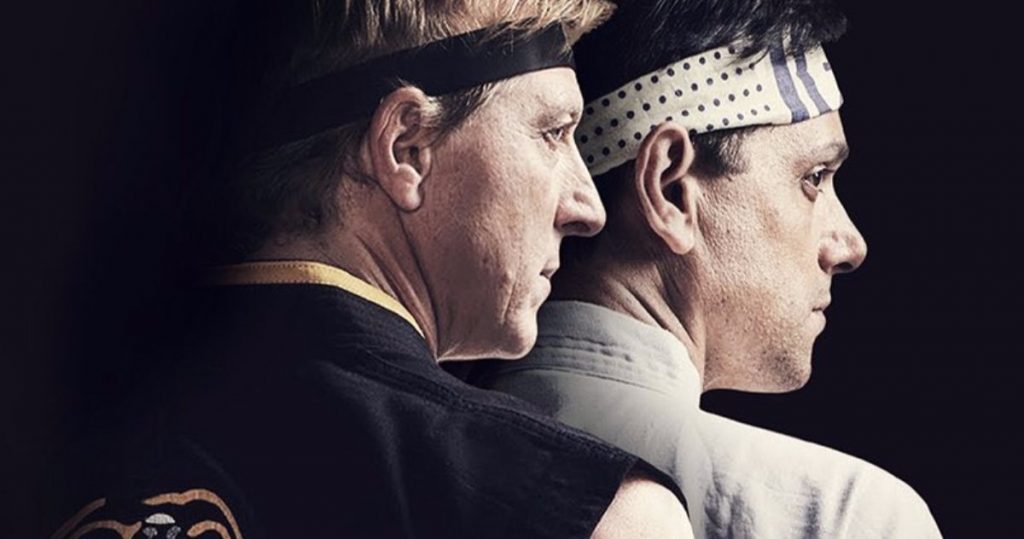Cobra Kai has never shied away from embracing the absurdities of its premise and characters. In doing so, it has created a self-aware show that is both adorably corny and true to its characters. Originally made for Youtube Red, the show found new life on Netflix, entering the mainstream pop culture consciousness.
Season three picks up right where its predecessor left off, with Johnny (William Zabka) trying to help Miguel (Xolo Maridueña) recover from his accident, and Kreese (Martin Kove) returning Cobra Kai to its aggressive, villainous roots. Daniel (Ralph Macchio) is trying to save his car dealership from going under, and later, he tries to team up with Johnny to fight against Kreese. The teens are dealing with their own troubles, with Sam (Mary Mouser) suffering PTSD from Tory (Peyton List) injuring her last season and Demitri suffering more humiliation from Hawk (Jacob Bertrand).
Cobra Kai’s plotting has never been its strong point, and this season suffers from that as well. Characters, in particular, end up repetitively making stupid decisions. Also, the police seem to be never around, except for arresting Robby Kean (Tanner Buchanan). Later, Robbie helps the other Cobra Kai steal snakes from a zoo, and again, there seems to be no repercussions.
However, the show excels in rehabilitating previously one-note characters, this time focusing on The Karate Kid 2 antagonist, Chozen (Yuji Okumoto) and John Kreese. We see how Kreese transformed into a cold bully. Of course, that doesn’t mean we have to condone his current actions, only that there’s more of a context to how he turned out this way.
Cobra Kai brings back more characters from the past in a way that feels both respectful to their original portrayals and forward thinking.
They have moved on with their lives, and although they found joy and nostalgia in the past, they aren’t beholden to it.
This is the second season that succeeds despite not featuring a tournament, culminating in a destructive brawl at the LaRusso residence. We get a long-anticipated face turn, which leaves the Cobra Kai dojo at an interesting place.
Not all of the characters receive the same kind of development. Robby, for instance, feels underused, and the face turn for another major character feels undercooked.
In some ways, season three is the least fleshed out season so far, but it still works thanks to the self-aware tone and eccentric humor. Certain scenes, such as Johnny sending a humongous wall of text to his old flame, have already become memes. There are several scenes in the season where characters directly call out tropes being used, such as Daniel saying “There’s no need to turn this into a karate Footloose”, or Johnny saying that Tango & Cash were narcotics detectives and what he and Daniel are doing is “completely different”.
The way this season ends, however, one can’t help but feel this was mostly a transition to setting up the higher stakes of the upcoming season four. Still, the characters make it work. The show continues to nail the balancing act between keeping the spirit of the original films and making a new saga that feels true to modern times. Of course, it’s absurd that so many people are fighting over karate, but that’s the charm of the series. You buy all into its absurdness and go along with the roller coaster of action and competing martial arts philosophies.
